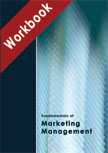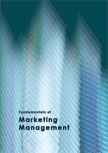Unilever in India - Building and Nurturing Brands




|
|
ICMR HOME | Case Studies Collection
Case Details:
Case Code : MKTA003
Case Length : 33 Pages
Period : 2000-2004
Pub Date : 2004
Teaching Note :Not Available
Organization : Unilever, Hindustan Lever Limited (HLL)
Industry : Fast Moving Consumer Goods (FMCG)
Countries : India
To download Unilever in India - Building and Nurturing Brands case study
(Case Code: MKTA003) click on the button below, and select the case from the list of available cases:

Price:
For delivery in electronic format: Rs. 500;
For delivery through courier (within India): Rs. 500 + Rs. 25 for Shipping & Handling Charges
» Marketing Case Studies Collection
» Marketing Communications Short Case Studies
» View Detailed Pricing Info
» How To Order This Case
» Business Case Studies
» Case Studies by Area
» Case Studies by Industry
» Case Studies by Company
Please note:
This case study was compiled from published sources, and is intended to be used as a basis for class discussion. It is not intended to illustrate either effective or ineffective handling of a management situation. Nor is it a primary information source.
|
|
<< Previous
Introduction Contd...
|
While profitability had improved, HLL realized without growth, it would be difficult to reward shareholders in the long run.
Meanwhile, a price war had broken out in the Indian detergents market, led by Procter & Gamble. While HLL Chairman, M. S. Banga remained confident that his company's strong brand portfolio could withstand the fiercest competitive onslaught, many analysts remained skeptical.
Amidst this skepticism, in early 2004, HLL announced a major shake up in its organization structure that seemed to curtail the powers of Banga.
|
|
Background Note
HLL's origin went back to 1885 when the Lever Brothers set up "William Hesketh Lever", in England. In 1888, the company entered India by exporting 'Sunlight', its laundry soap. In 1895, the Lifebuoy soap was launched in India followed by 'Pears' in 1902, 'Lux' flakes in 1905 and 'Vim' scouring powder in 1913.
In 1930, the company merged with 'Margarine Unie' (a Netherlands based company which exported vanaspati to India), to form Unilever. In 1931, Unilever set up it first Indian subsidiary, the Hindustan Vanaspati Manufacturing Company for production of vanaspati. This was followed by the establishment of Lever Brothers India Ltd. in 1933 and United Traders Ltd. in 1935, for distribution of personal products.
|
|
In 1951, HLL purchased plants at Trichy, Shamnagar and Ghaziabad to expand its vanaspati production capacity.
In November 1956, the three Indian subsidiaries merged to form Hindustan Lever Ltd. (LL).
The same year, HLL offered 10% of its equity to the Indian public. Through the 1960s and 1970s, HLL continued to consolidate its position in a highly regulated market.
Despite various restrictions on entering new businesses and adding capacity, the company continued to look for ways to innovate and grow... |
Excerpts >>
|
|



